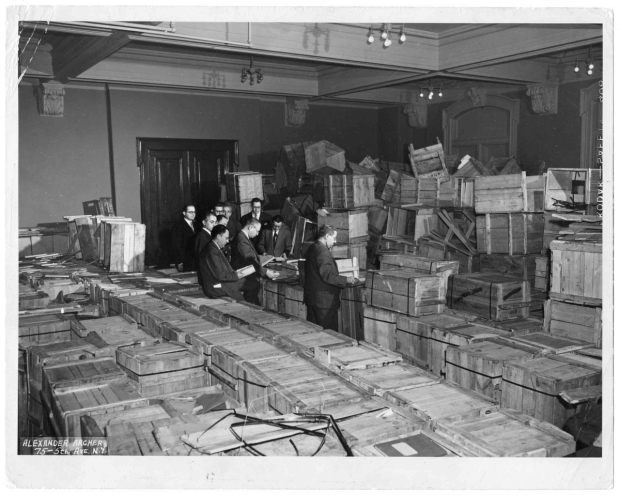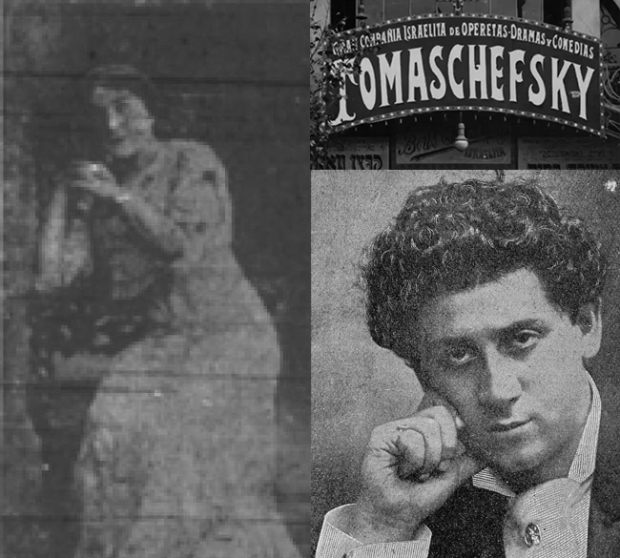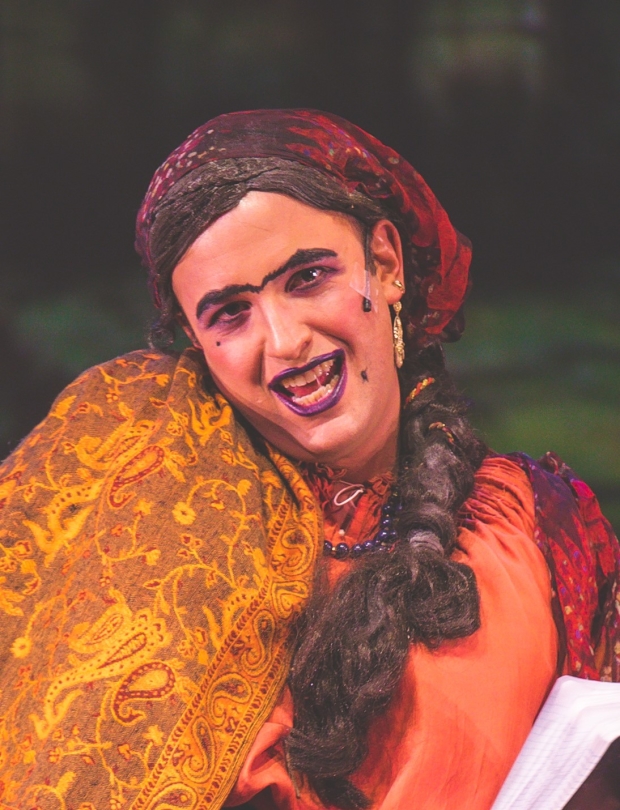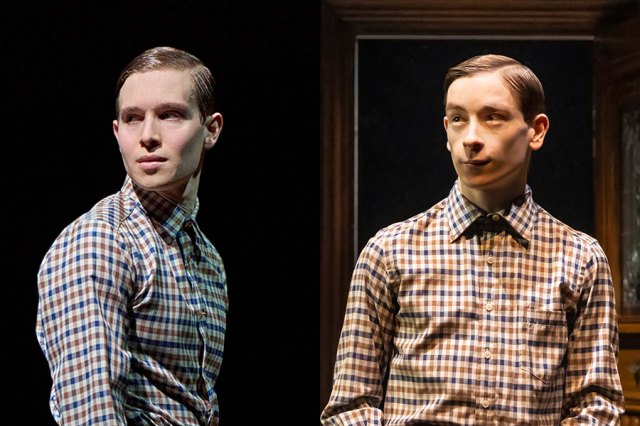Top Five Reasons to See The Sorceress in Yiddish
National Yiddish Theatre Folksbiene presents revival of first Yiddish theater production in the US.
The Sorceress (Di Kisherfmakherin) is a musical fantasy that weaves the tale of a pure-hearted young woman who triumphs over her tormentors — a devious stepmother and a scheming wicked witch — who are colluding to steal her family's fortune. The Sorceress takes its audience into a world of illusion, intrigue, and, not least of all, suspense. It was written during a tumultuous time in history and presents metaphors for good and evil that we can still identify with today.
Here are five reasons to see The Sorceress this holiday season.
1. Yiddish Theatre came to America with The Sorceress
The Sorceress was the first Yiddish theater production in the United States, establishing Second Avenue in the "Jewish" Lower East Side (now the East Village) as the Yiddish Theater District. In the subsequent three decades, New York would see the establishment of over a dozen Yiddish theaters and the founding of the National Yiddish Theatre Folksbeine which — now in its 105th season — is the oldest consecutively producing theatre company in the country. The influence of Yiddish theater on today's performing artists is undeniable, and today's theatergoers are embracing the roots of modern-day theater — with translation assistance, of course. This is evidenced in the popularity of NYTF's production of Fiddler on the Roof (A Fidler Afn Dakh), which plays to sold-out theaters and has won multiple awards.

(© YIVO Archives)
2. The scholar-heroes of YIVO Vilna saved this and other Jewish cultural treasures from the Nazis.
While most clandestine work in the Vilna ghetto likely centered around smuggling food for survival and valuables for bribes, a group of YIVO Vilna scholars and others risked their lives secreting priceless cultural gems — music, rare books, manuscripts, and plays — into milk jugs and under floor boards and other hideaways. This was perilous work, and those who took it on knew their survival was unlikely; but they were hopeful the Nazis would lose the war and there would be a time when Jewish life would return. The Sorceress, written in 1878 by Avram Goldfaden, is one of the very earliest works of Yiddish theater; and the fully restored orchestrations are based, in part, on pre-Holocaust musical arrangements which were saved from destruction at the hands of the Nazis by YIVO scholars. This fully staged work is the culmination of a project that NYTF began in 2017 to restore this classic. NYTF's Global Restoration Initiative identifies the best examples of Yiddish operettas, musicals, and plays; reassembles librettos and scores in a digital format (rendering them usable to artists and scholars); and presents the work to audiences often for the first time in a half-century or more. The Sorceress is fulfilling the Folksbiene's dream of rescuing and restoring the essential works of the Yiddish theatre.

(© Courtesy of NYPL.)
3. Yiddish theater came to America thanks to the chutzpah of a 14-year-old immigrant working in a cigarette factory.
In 1882, 14-year-old Boris Thomashefsky, who had only recently immigrated to the United States, was working in a cigarette factory where he enjoyed his coworkers singing tunes from Yiddish theater, including The Sorceress. Though he had never seen Yiddish theater in his native Ukraine, he loved the tunes so much that he convinced a Bowery beer hall owner to finance his production of The Sorceress. The partner paid for a Yiddish theater troupe from London to travel to New York for the production. On opening night, Thomashefsky learned that the woman who was to play the role of the ingenue — Mirele — was no longer available due to dubious circumstances. Thomashefsky reportedly performed the role in drag. Coincidentally, the role of the Sorceress traditionally has been played by a man — a dream role for some of the greatest leading men of their time including Maurice Schwartz and Benjamin Zuskin of the State Jewish Theater in Moscow.

4. Mikhl Yashinsky stars as the Sorceress, taking leave from his role in the Yiddish-language Fiddler on the Roof currently playing in midtown.
Yashinsky first played the role of the Sorceress (Bobe Yakhne) when NYTF staged a lauded reading in 2017. Yashinsky describes the musical: It is melodramatic, operatic, romantic, exotic, fantastic entertainment such as would have delighted the Jews of Eastern Europe at its premiere in 1877 and still delivers its distinct charms to anyone, anywhere today, while still reeking wonderfully (and somehow refreshingly!) of its strange 19th-century perfume. There are scenes set in the lair where the witch does her divining, at a 16-year-old's birthday party in a beautiful garden, at a coffeehouse in Istanbul. It is nothing like a piece of musical theater that would get written today, and thank God — and Goldfaden (the playwright) — for that!
5. Will Good trump Evil?
On the surface, The Sorceress is a fairy tale. But as metaphor, it is about the avarice-fueled oppression of innocents using the tools of family separation, human trafficking, and violence. The metaphor still works today as it did when it was written — in Romania during the time of the Russo-Turkish War of 1877-78. NYTF presents theater that transcends language and time. The Sorceress is part of NYTF's season of "Spiritual Resistance," which features artistic and theatrical works that explore themes of struggle against oppression. The programming provides artistic expression concurrent with the exhibition Auschwitz: Not long ago. Not far away. being presented at the Museum of Jewish Heritage — A Living Memorial to the Holocaust.
The Sorceress will be performed from December 1 through December 29 at the Museum of Jewish Heritage — A Living Memorial to the Holocaust, Edmond J. Safra Plaza, 36 Battery Place, New York City. Tickets for previews start at $49; regular season tickets start at $59 and are available at www.nytf.org. The Sorceress will be performed in Yiddish, with English and Russian supertitles.









